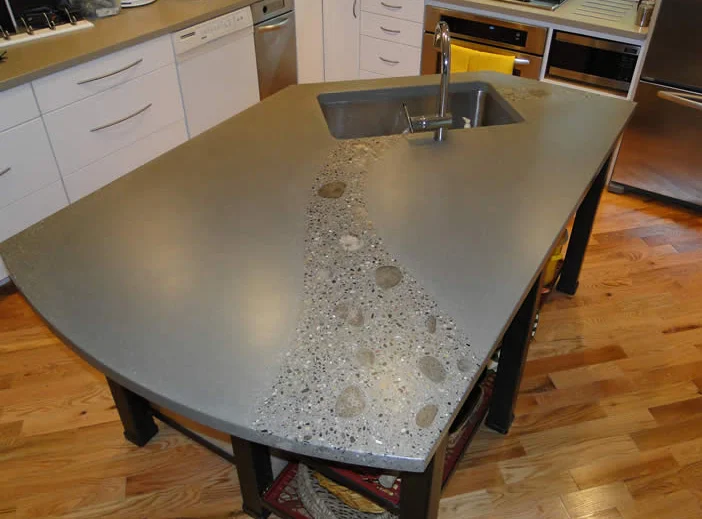When I first considered concrete countertops, I have to admit I didn’t know what to expect. Like many, I associated concrete with sidewalks and driveways, not kitchen surfaces. However, after doing my research and seeing the incredible versatility concrete offers, I realized it could be one of the most unique and customizable materials for a countertop. Concrete countertops offer a raw, modern aesthetic while being surprisingly adaptable to different styles, whether you’re going for industrial chic or something more polished and contemporary. What drew me in was the fact that each concrete countertop is completely one-of-a-kind. Unlike stone or engineered surfaces that can feel mass-produced, concrete allows for personal touches in texture, color, and design that make it a focal point in any space.
One of the main reasons I was drawn to concrete was its customizability. No two concrete countertops are the same, and that’s something that can’t be said about many other countertop materials. You can mold concrete into any shape, which is particularly helpful if you have a unique kitchen layout or want integrated features like a built-in sink or drainboard. Plus, the coloring options are practically endless. You can add pigments to create anything from deep, rich hues to lighter, more neutral tones. For me, this was one of the most exciting parts of the process—the ability to choose a color that perfectly matched the overall design of my kitchen.
I also discovered that the finish of a concrete countertop can be tailored to your preferences. It can be polished to a smooth, reflective surface that mimics stone, or it can be left a little rougher for a more organic feel. I opted for a semi-polished finish, which gave my countertop a slight sheen without losing the tactile quality of the material. The finish also affects how the countertop wears over time. A polished surface may show scratches more easily but can be buffed to remove them, while a matte finish might better hide wear and tear.
One thing I quickly learned is that concrete countertops require a bit more care than other materials like granite or quartz. While they are incredibly durable and long-lasting, they are porous, meaning they can absorb liquids and stain if not properly sealed. To combat this, I made sure to seal my countertops regularly, which protects them from water, oil, and even acidic substances like lemon juice. While sealing adds an extra step to maintenance, I found it worthwhile for the added peace of mind that my countertops would stay looking great.

That said, one of the most charming qualities of concrete is how it changes over time. Unlike some other materials that strive to stay pristine and unaltered, concrete develops a patina. This means that small imperfections, variations in color, and light wear contribute to its character. For me, this is part of the beauty of concrete—it’s a material that reflects its history, showing the marks of years of use in a way that feels authentic and lived-in.
Another key point about concrete countertops is their strength and durability. Despite its soft, moldable beginnings, concrete hardens into a rock-solid surface that can handle heat, impact, and heavy use. I’ve never had to worry about setting a hot pan directly on my concrete countertops or being overly cautious with heavy items like cast iron. This robustness makes concrete an excellent choice for a busy kitchen where durability is as important as aesthetics.
I should mention that while concrete is tough, it isn’t indestructible. The surface can crack, especially if it wasn’t properly reinforced during installation. Hairline cracks aren’t uncommon and, in some cases, can add to the countertop’s character, but they are something to be aware of. Luckily, many cracks can be repaired, and reinforcing the countertop with materials like wire mesh or fiberglass can minimize the likelihood of cracking in the first place. It’s one of those factors you just have to weigh against all the other benefits.
One aspect of concrete countertops that often surprises people is their weight. Concrete is a very dense material, which means it’s heavier than many other countertop options. When I was having my countertops installed, we had to make sure the cabinets and supports were reinforced to handle the extra weight. It’s definitely something to plan for, especially if you’re building or remodeling a kitchen from the ground up. I had to work with a contractor to make sure everything was properly supported before installation.
A major bonus of concrete countertops is the sustainability aspect. Concrete is made from natural materials—sand, cement, water, and aggregates—which means it’s a more eco-friendly option compared to some other countertop materials. Additionally, if you’re concerned about the environmental impact, you can even use recycled materials like glass or metal shavings as part of the aggregate, which gives the countertop a unique appearance and reduces waste. This option felt good to me, knowing that I could create something beautiful while being mindful of the environment.
Something I didn’t anticipate was how well concrete pairs with other materials in the kitchen. It complements wood, metal, and glass seamlessly. I have a wood island in the center of my kitchen, and the natural grain of the wood looks fantastic against the cool, smooth texture of the concrete. Stainless steel appliances also pop when contrasted with the matte finish of the countertops. Concrete acts almost like a blank canvas that allows other elements in the kitchen to shine while still holding its own as a statement piece.
In terms of cost, concrete countertops are often in the mid-range, depending on how much customization is involved. They’re generally more affordable than high-end materials like marble, but they can be more expensive than laminate or tile. For me, the cost was well worth it because of the ability to tailor every aspect of the countertop to my specific tastes. You can keep the price down by opting for more straightforward designs or less intricate detailing, but even with a few custom features, it can be a cost-effective way to get a unique look.

Installation can be tricky, though. Because concrete countertops are often custom-made, you’ll need to work with a professional who knows how to mold, cast, and cure the material properly. In some cases, the countertops are made off-site and then transported to your home, while in other cases, they’re poured in place. My countertops were cast off-site, which helped ensure a smooth and consistent finish, but it did mean we had to wait for them to cure fully before installation. Patience is key with concrete because it takes time for the material to set and achieve its final hardness.
One of the challenges I faced early on was selecting the right type of sealant for my concrete countertops. There are several options, from natural waxes to more heavy-duty sealants. I opted for a penetrating sealer that soaks into the concrete, providing protection from within without altering the surface appearance too much. This type of sealer doesn’t leave a shiny or plastic-like film, which was important to me because I wanted to maintain the natural look of the concrete. Reapplying the sealant every few months has become part of my kitchen routine, and it’s a small price to pay for the lasting beauty and functionality it provides.
Another thing I love about concrete countertops is that they can be easily repaired or refinished if needed. Unlike some materials that are difficult to restore once they’ve been damaged, concrete can be sanded down, patched, and resealed. This adds to its longevity, making it a material that can last for decades with the proper care. I’ve heard stories of concrete countertops being passed down through generations, their surfaces telling the story of every meal prepared on them. That’s the kind of legacy I hope my countertops will leave.
Finally, I can’t stress enough how much the uniqueness of concrete countertops adds to the overall personality of a kitchen. Every imperfection, every change in texture or color over time, makes the countertop feel like it belongs specifically to your home. It’s a far cry from the uniformity of other countertop materials. Concrete brings a raw, elemental quality into your kitchen that feels both modern and timeless, blending effortlessly into the rhythm of daily life while standing out as a bold design choice.
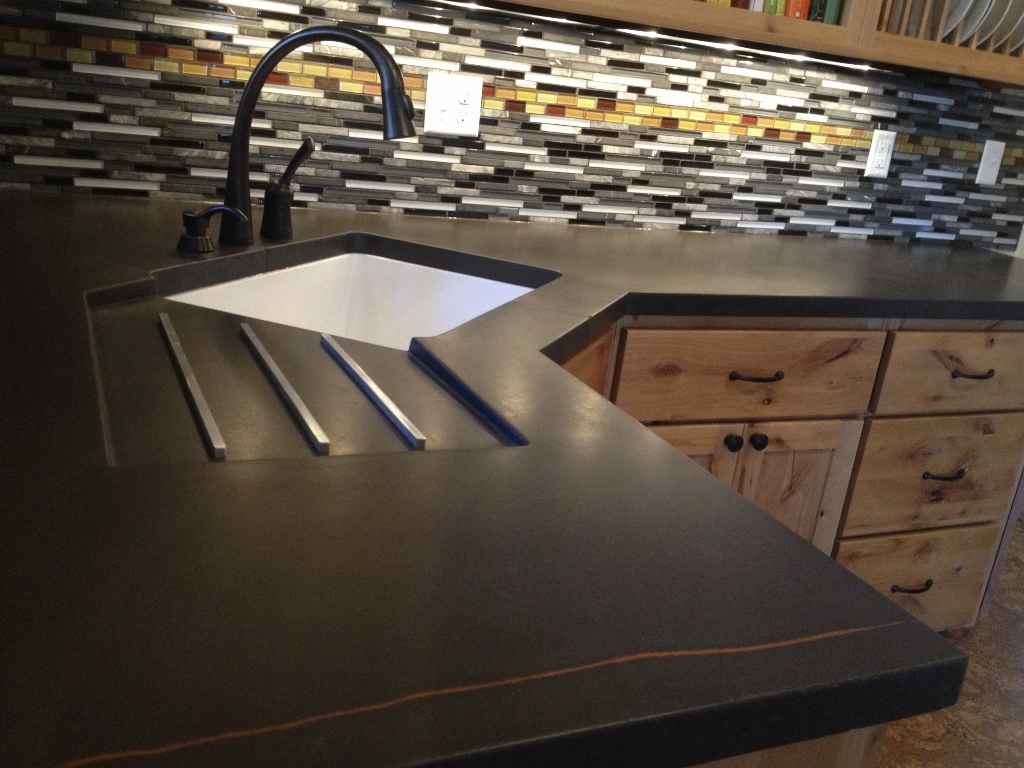
Common Mistakes to Avoid:
One mistake I’ve seen people make is not sealing their concrete countertops properly or frequently enough. This leaves the surface vulnerable to stains, water damage, and even bacteria. It’s also easy to forget about reinforcing the support structure—concrete is heavy, and without proper reinforcement, it could cause damage to your cabinetry.
Another common error is trying to DIY the installation without the right expertise. While concrete may seem simple, getting a smooth, crack-free surface takes skill. Finally, some people use harsh chemicals for cleaning, which can break down the sealer and lead to surface damage.
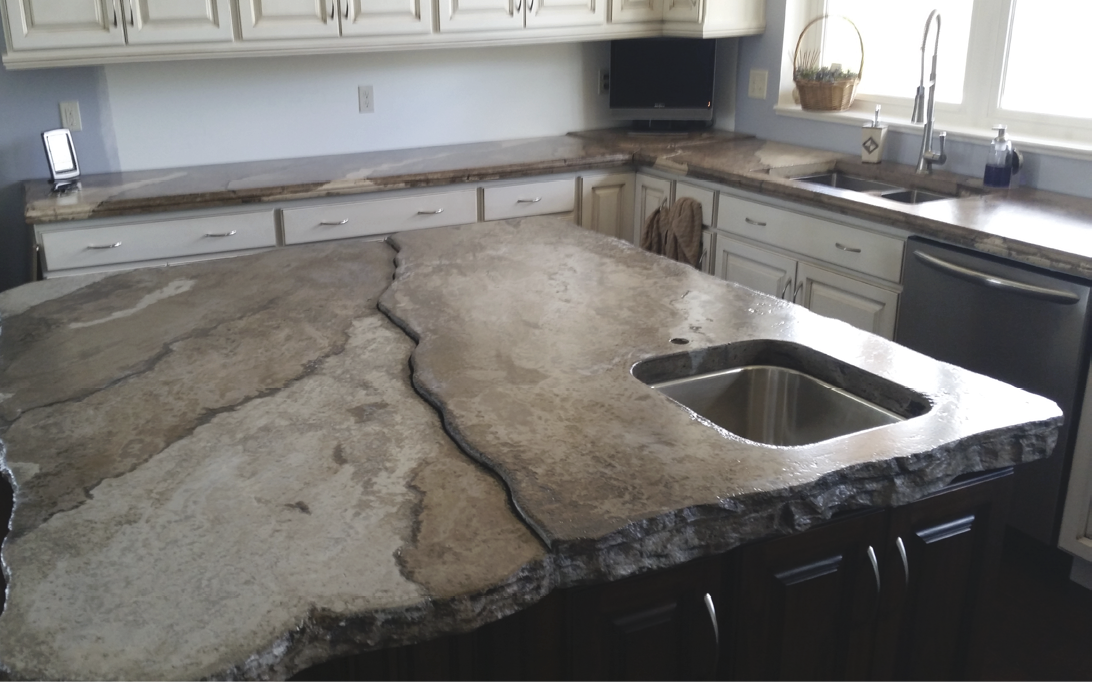
How do I maintain concrete countertops?
Maintaining concrete countertops requires regular sealing to protect them from stains and moisture. Depending on the type of sealant you use, you may need to reseal every few months or annually. Cleaning should be done with a mild soap and water solution—avoid using harsh chemicals or abrasives, as they can wear down the sealant and damage the surface.
Can concrete countertops crack?
Yes, concrete countertops can crack, especially if they are not properly reinforced during installation. Hairline cracks are fairly common and can even add to the character of the countertop. However, if you’re concerned about larger cracks, reinforcing the concrete with wire mesh or fiberglass during installation can help prevent significant damage.
Are concrete countertops expensive?
Concrete countertops fall in the mid-range of countertop materials in terms of cost. They can be more affordable than high-end options like marble but more expensive than laminate or tile. The cost will vary depending on the level of customization, such as color, finish, and embedded materials.

Can concrete countertops be repaired?
Yes, concrete countertops can be repaired if they become damaged. Small cracks or chips can be filled in, and the surface can be sanded and resealed. This makes concrete a great long-term investment since it’s easy to refinish and restore compared to some other countertop materials.
What colors are available for concrete countertops?
Concrete countertops can be customized in almost any color. Pigments can be added to the concrete mix to achieve rich, bold colors or subtle, neutral shades. You can also incorporate materials like glass or metal into the surface for additional visual interest. This level of customization is one of the biggest benefits of choosing concrete.
Do concrete countertops need to be sealed?
Yes, sealing is essential for concrete countertops because the material is naturally porous. Without a proper sealant, concrete can absorb liquids and become stained. Sealing the countertop protects it from water, oil, and acids, ensuring it remains durable and looks great for years to come.
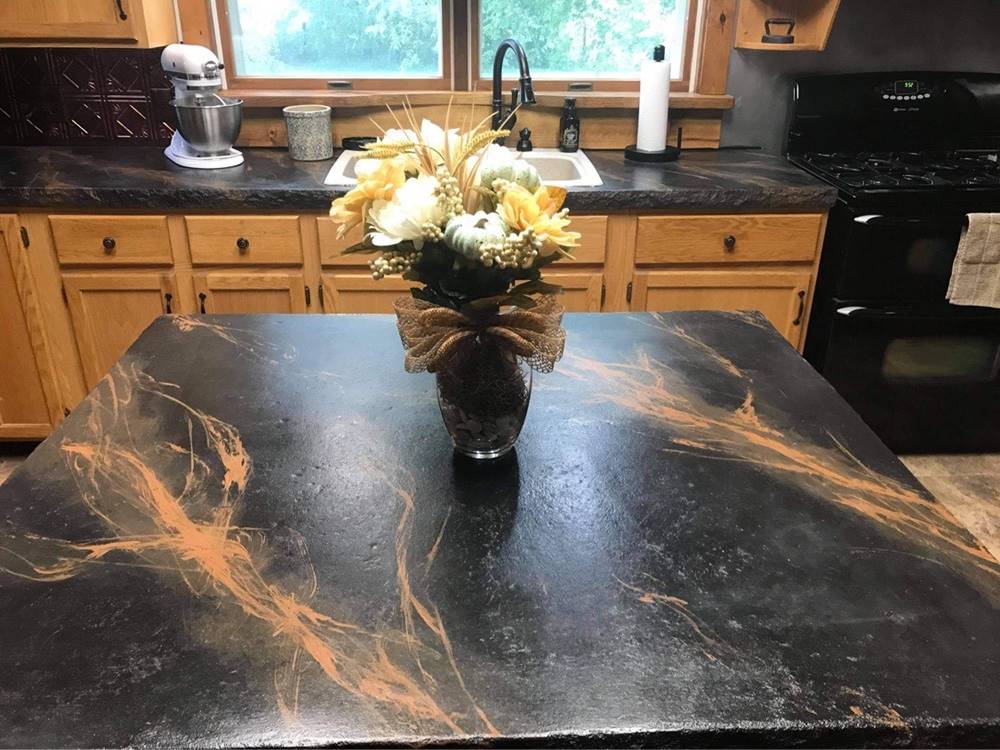
Benefits of Concrete Countertops

Stained Concrete Countertops – Direct Colors DIY Home Projects
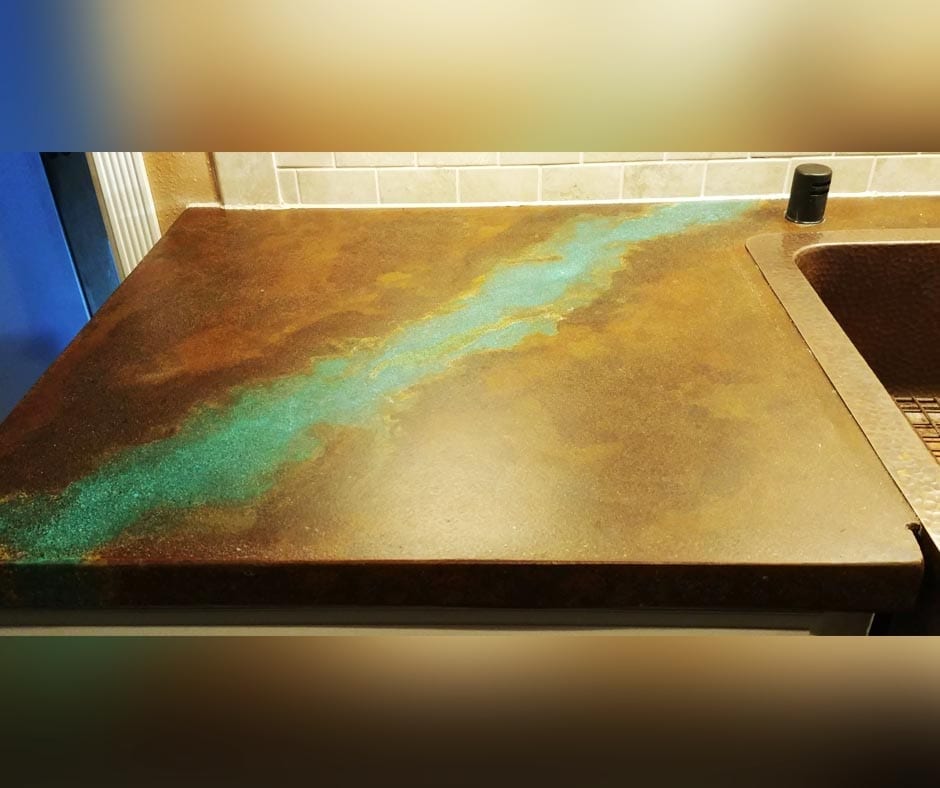
Related articles:
